Learn About Your Options
You shouldn’t have to pay for birth control – it’s free. To find out more information about how you can be covered for the birth control method of your choice click here.
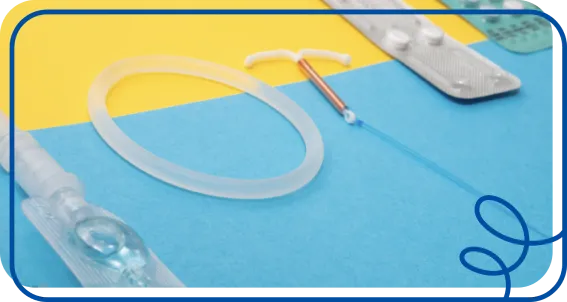
Take the Birth Control Options Quiz
Jump to Section
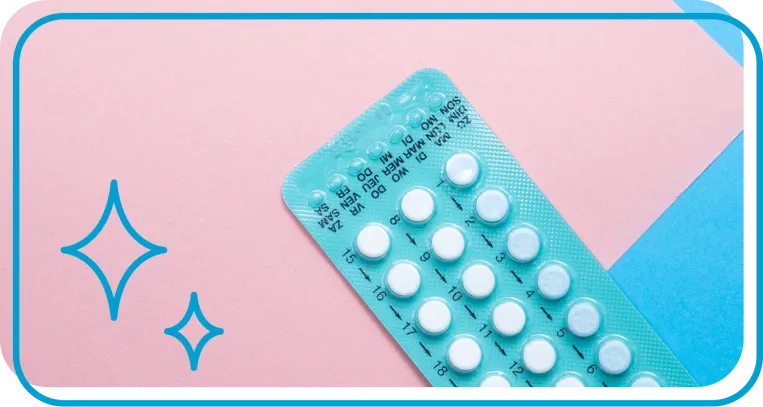
Combination Pill
How Does This Method Work?
Pills are a daily method taken by mouth once every day at the same time. These pills are most commonly combined with both estrogen and progestin, and are also known as combined oral contraceptives (COCs). Each pack contains a series of pills that contain hormones and ones that do not. The pills that do not contain hormones are taken during your period week.
How Does This Option Get Started or Stopped?

How Well Does It Prevent Pregnancy?

How Long Does it Last?

How Much Does It Cost?
To get started, find a free or low cost birth control pill provider here on ICAN!.
Frequently Asked Questions
Common Side Effects:
If you have questions or concerns about any of the symptoms listed below, please contact your provider.
- Breast tenderness
- Can help polycystic ovary syndrome (PCOS) and endometriosis symptoms
- Can lower your risk of ovarian cancer and uterine/endometrial cancer
- Changes in sex drive
- Clearer skin
- Headaches
- Lessen premenstrual syndrome (PMS) and premenstrual dysphoric disorder (PMDD) symptoms
- Mood changes
- Nausea
- Reduce cramps and bleeding
- Spotting

Progestin Only Pills
How Does This Method Work?
Pills are a daily method taken by mouth once every day at the same time. These pills contain progestin only and are sometimes called “mini-pills” or POPs. They are less common but a great option for someone who can’t use estrogen and wants to take daily pills. These pills work by releasing small amounts of progestin in the body every day of the month. Unlike combination pills, mini-pills do not have a period week.
How Does This Option Get Started or Stopped?

NEW UPDATE!
A daily progestin only pill called Opill is now available at certain pharmacies without a prescription! This birth control pill is over-the-counter (OTC) and suitable for anyone who wants to reduce their risk of pregnancy. And it’s covered by Illinois Medicaid. When taken at the same time every day (within 3 hours), this pill can reduce the risk of pregnancy by thickening the cervical mucus and decreasing ovulation. With a progestin only pill, an expected side effect is non-cyclic and irregular bleeding. This pill does not have estrogen, as some people with certain conditions should not use estrogen. Pills do not protect you from STIs /HIV, use condoms to decrease your risk. To learn more about Opill, see their website.
How Well Does It Prevent Pregnancy?

How Long Does it Last?

How Much Does It Cost?
To get started, find a free or low cost birth control pill provider here on ICAN!.
Frequently Asked Questions
Common Side Effects:
If you have questions or concerns about any of the symptoms listed below, please contact your provider.
- Acne
- Breast tenderness
- Headaches
- Irregular bleeding
- Nausea
- Spotting
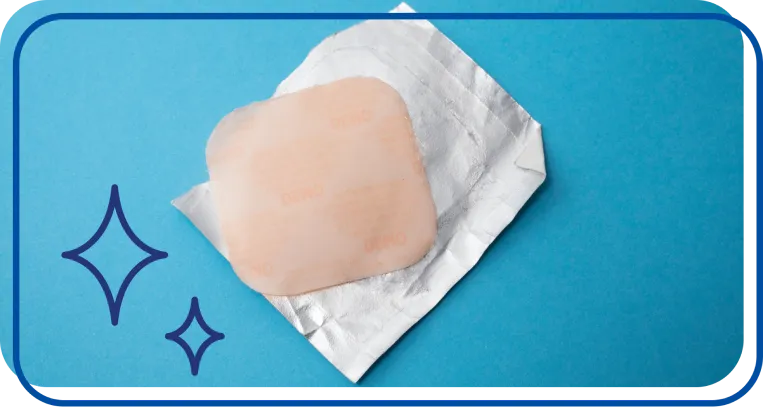
Patch
How Does This Method Work?
The patch is band-aid-like, worn on the skin and replaced every week for three weeks, with one week off for your period. The hormones in the patch are estrogen and progestin, which are absorbed through the skin.
How Does This Option Get Started or Stopped?

How Well Does It Prevent Pregnancy?

How Long Does it Last?
How Much Does It Cost?
With Illinois programs and participating providers, there shouldn’t be any out-of-pocket costs to you; but costs for this method can range from $0 – $150+ per month.
To get started, find a free or low cost birth control patch provider here on ICAN!.
Frequently Asked Questions
Common Side Effects:
If you have questions or concerns about any of the symptoms listed below, please contact your provider.
- Breast tenderness
- Can lower your risk of ovarian cancer and uterine/endometrial cancer
- Change in sex drive
- Clearer skin
- Headaches
- Mood changes
- Nausea
- Reduce cramps
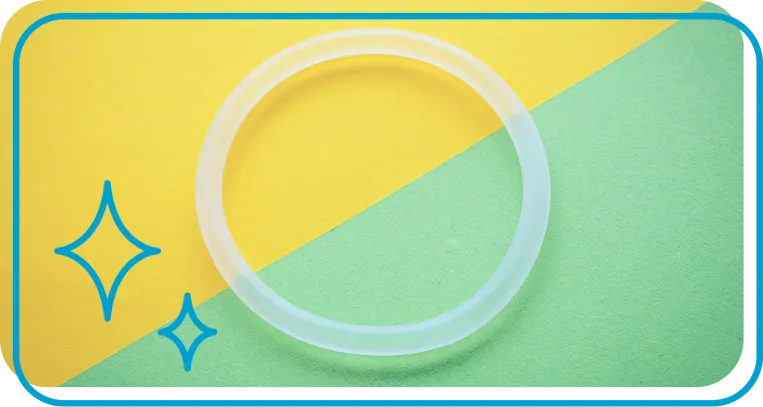
Ring
How Does This Method Work?
The vaginal ring is a circular plastic band worn inside the vagina where it releases the hormones estrogen and progestin. There are two types: 1) a monthly ring and 2) an annual ring. The monthly ring lasts one cycle (3 weeks in, 1 week out to bleed) and is then replaced the following month with a new ring and the old ring is disposed of. The annual ring is good for an entire year (3 weeks in, 1 week out to bleed) and then replaced with the same ring the following month.
How Does This Option Get Started or Stopped?
Patient controlled: Patient decides when to start/stop, but a prescription from a provider is required. Please share with your provider about any other health conditions or medications (even over the counter) you may be taking to make sure there are no interactions or concerns.

How Well Does It Prevent Pregnancy?
Efficacy for pregnancy prevention (out of 100 users with TYPICAL use over one year)

How Long Does it Last?
The monthly ring is changed every 3 weeks and it’s removed on the 4th week.

How Much Does It Cost?
With Illinois programs and participating providers, there shouldn’t be any out-of-pocket costs to you; but costs for this method can range from $0 – $2,000+ per year.
To get started, find a free or low cost birth control ring provider here on ICAN!.
Frequently Asked Questions
Common Side Effects:
If you have questions or concerns about any of the symptoms listed below, please contact your provider.
- Breast tenderness
- Can help with polycystic ovary syndrome (PCOS) and endometriosis symptoms
- Can lower your risk of ovarian cancer
- Changes in sex drive
- Clearer skin
- Headaches
- Mood changes
- Nausea
- Reduces cramps
- Vaginal discharge
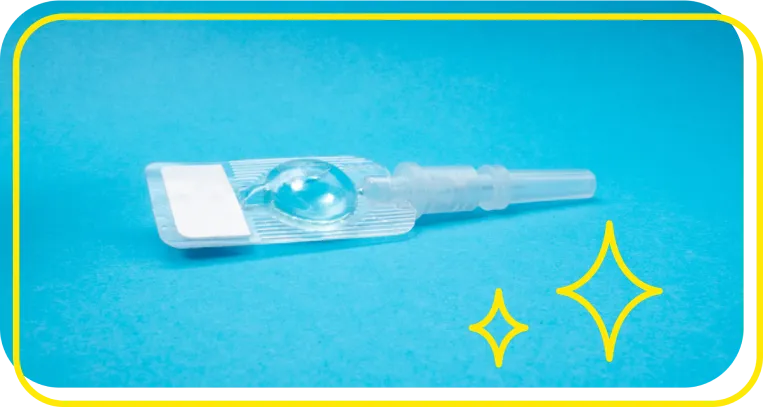
Shot
How Does This Method work?
The depo shot is a contraceptive injection inserted into the arm, stomach or bum every three months. There are currently two ways in which the shot is given. The first is a small needle under the skin called subcutaneous which can possibly be self injected. The second and more common method is an intramuscular shot, which is given by a healthcare professional. This method contains progestin only.
How Does This Option Get Started or Stopped?
Provider dependent: To start or stop this method, you need to see a provider for the injection. If you are self injecting you need to see a provider for a prescription. Please share with your provider about any other health conditions or medications (even over the counter) you may be taking to make sure there are no interactions or concerns.

How Well Does It Prevent Pregnancy?
Efficacy for pregnancy prevention (out of 100 users with TYPICAL use over one year)

How Long Does it Last?
The depo shot is injected every 3 months.
How Much Does It Cost?
With Illinois programs and participating providers, there shouldn’t be any out-of-pocket costs to you; but costs for this method can range from $0 – $150+ every three months.
To get started, find a free or low cost birth control shot provider here on ICAN!.
Frequently Asked Questions
Common Side Effects:
If you have questions or concerns about any of the symptoms listed below, please contact your provider.
- Bone density loss (reversible once you stop the shot, your body will catch up)
- Changes in sex drive and appetite
- Changes to periods
- Headaches
- Mood changes
- Nausea
- Pain/reaction at the injection site
- Reduces cramps
- Tender breasts
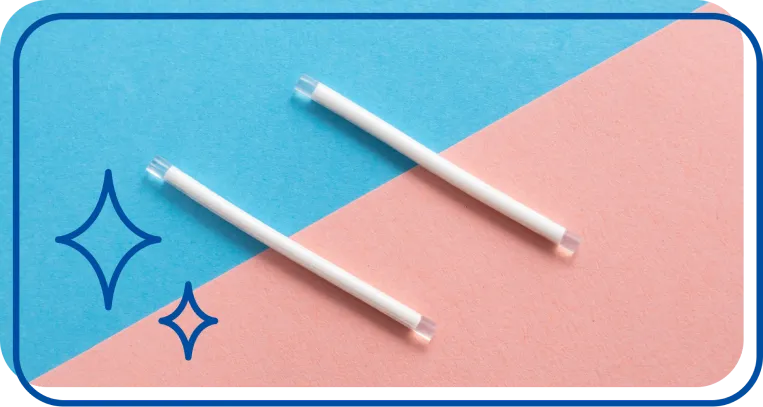
Implant
How Does This Method work?
The implant is a match-sized plastic rod inserted into the underside of the upper arm by a skilled provider. Medicine is given by a needle under the insertion site to numb the area. You may feel a pinch/burn and then some tugging of the skin during the insertion. Afterwards you will wear a tight bandage around your arm for a day or two to help with bruising at the site. The active hormone in the implant is progestin.
How Does This Option Get Started or Stopped?
Provider dependent: To start or stop this method, you need to see a provider for the insertion and removal. Please share with your provider about any other health conditions or medications (even over the counter) you may be taking to make sure there are no interactions or concerns.

How Well Does It Prevent Pregnancy?
Efficacy for pregnancy prevention (out of 100 users with TYPICAL use over one year)

How Long Does it Last?
The implant lasts up to 5 years. It can be removed anytime sooner.
How Much Does It Cost?
With Illinois programs and participating providers, there shouldn’t be any out-of-pocket costs to you; but costs for this method can range from $0-$1,300+.
To get started, find a free or low cost birth control implant provider here on ICAN!.
Frequently Asked Questions
Common Side Effects:
If you have questions or concerns about any of the symptoms listed below, please contact your provider.
- Breast tenderness
- Changes in sex drive
- Decrease premenstrual symptoms (PMS)
- Decreases cyclic cramping and heavy bleeding
- Hassle free method, don’t have to remember to do something daily, weekly or monthly.
- Headaches
- Irregular bleeding
- Mood changes
- Nausea

Hormonal IUD
How Does This Method Work?
The Hormonal IUD is a tiny t-shaped device that releases the hormone progestin into the body. A quick outpatient office procedure is required for the insertion of the device. It is inserted through the cervix and placed at the tip of the uterus. Prior to insertion, a brief manual pelvic exam is done to confirm the shape of your uterus which helps with ease of placement. For this procedure providers use a speculum (same instrument used for pap exams) and the cervix is cleaned with an antiseptic. With insertion, some people may feel a sharp cramp/pinch, while others feel long and intense cramping; the use of a numbing medicine in the form of a gel, spray, or injection may help. Over the counter medication taken to help with period cramps is usually advised one hour prior to insertion and can be continued for day(s) after insertion.
How Does This Option Get Started or Stopped?
Provider dependent: To start or stop this method, you need to see a provider for the insertion and removal. Please share with your provider about any other health conditions or medications (even over the counter) you may be taking to make sure there are no interactions or concerns.

How Well Does It Prevent Pregnancy?
Efficacy for pregnancy prevention (out of 100 users with TYPICAL use over one year)

How Long Does it Last?
The Hormonal IUD lasts between last 3-7 years. It can be removed anytime sooner.

How Much Does It Cost?
With Illinois programs and participating providers, there shouldn’t be any out-of-pocket costs to you; but costs for this method can range from $0-$1,300+.
To get started, find a free or low cost IUD provider here on ICAN!.
Frequently Asked Questions
Common Side Effects:
If you have questions or concerns about any of the symptoms listed below, please contact your provider.
- Acne
- Breast tenderness
- Can be used as emergency contraception
- Hassle free method, don’t have to remember to do something daily, weekly or monthly.
- Headaches
- Irregular bleeding
- Mood changes
- Nausea
- Pain during and after insertion (this includes backaches, these should subside in a few days)
- Reduce cramps
- Reduced risk of ovarian and endometrial/uterine cancer
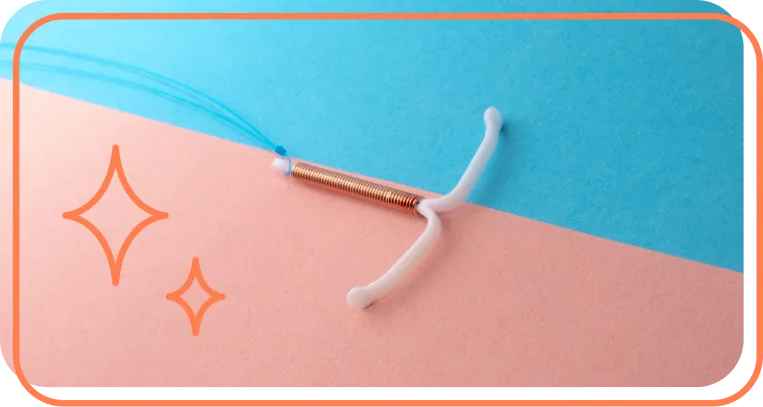
Copper IUD
How Does This Method Work?
The Copper IUD is a tiny t-shaped device that releases copper into the body. A quick outpatient office procedure is required for the insertion of the device. It is inserted through the cervix and placed at the tip of the uterus. Prior to insertion, a brief manual pelvic exam is done to confirm the shape of your uterus which helps with ease of placement. For this procedure providers use a speculum (same instrument used for pap exams) and the cervix is cleaned with an antiseptic. With insertion, some people may feel a sharp cramp/pinch, while others feel long and intense cramping; the use of a numbing medicine in the form of a gel, spray, or injection may help. Over the counter medication taken to help with period cramps is usually advised one hour prior to insertion and can be continued for day(s) after insertion. This method contains no hormones.
How Does This Option Get Started or Stopped?
Provider dependent: To start or stop this method, you need to see a provider for the insertion and removal. Please share with your provider about any other health conditions or medications (even over the counter) you may be taking to make sure there are no interactions or concerns.

How Well Does It Prevent Pregnancy?
Efficacy for pregnancy prevention (out of 100 users with TYPICAL use over one year)

How Long Does it Last?
The Copper IUD lasts up to 12 years. It can be removed anytime sooner.

How Much Does It Cost?
With Illinois programs and participating providers, there shouldn’t be any out-of-pocket costs to you; but costs for this method can range from $0-$1,300+.
To get started, find a free or low cost IUD provider here on ICAN!.
Frequently Asked Questions
Common Side Effects:
If you have questions or concerns about any of the symptoms listed below, please contact your provider.
- Can be used as emergency contraception
- Hassle free method, don’t have to remember to do something daily, weekly or monthly.
- Heavier periods
- More or worse cramps during periods
- Pain during and after insertion (this includes backaches, these should subside in a few days)

Cervical Cap/Diaphragm
How Does This Method work?
A cervical cap/diaphragm is a reusable, hormone free, silicone cup that is inserted into the vagina to cover the cervix prior to sex. When inserted correctly neither partner should be able to feel it during sex. For maximum effectiveness this method must be used with spermicide.
How Does This Option Get Started or Stopped?
Patient controlled: Patient decides when to start/stop, but a prescription from a provider is required. Please share with your provider about any other health conditions or medications (even over the counter) you may be taking to make sure there are no interactions or concerns.

How Well Does It Prevent Pregnancy?
Efficacy for pregnancy prevention (out of 100 users with TYPICAL use over one year)

How Long Does it Last?
The cervical cap/diaphragm is used at the time of sex.
How Much Does It Cost?
With Illinois programs and participating providers, there shouldn’t be any out-of-pocket costs to you; but costs for this method can range from $0-$250+ for the Cervical cap, plus the cost of spermicide.
To get started, find a free or low cost cervical cap provider here on ICAN!.
Frequently Asked Questions
Common Side Effects:
If you experience any of these symptoms, see a provider as this could signal an allergy, STI or other health condition.
- Can be used multiple times during sex (just reapply spermicide)
- Skin irritation
- UTI’s
- Vaginal pain or itching
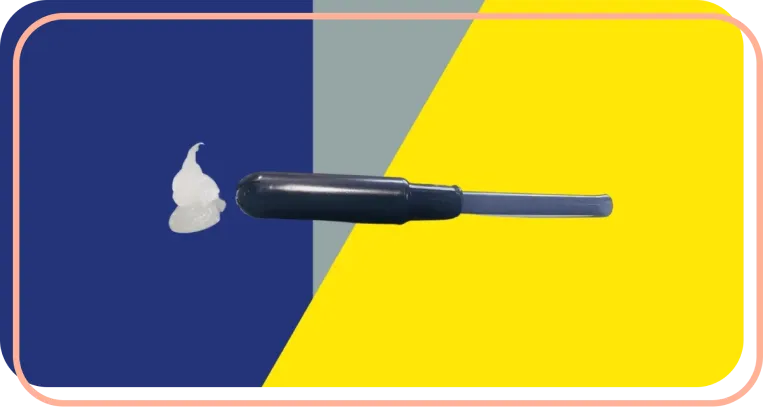
Vaginal Gel
How Does This Method work?
Vaginal gel is inserted into the vagina one hour before sex and must be used each time. The gel alters the vagina’s pH, preventing the sperm from reaching the egg. This method contains no hormones.
How Does This Option Get Started or Stopped?
Patient controlled: Patient decides when to start/stop, but a prescription from a provider is required. Please share with your provider about any other health conditions or medications (even over the counter) you may be taking to make sure there are no interactions or concerns.

How Well Does It Prevent Pregnancy?
Efficacy for pregnancy prevention (out of 100 users with TYPICAL use over one year)

How Long Does it Last?
The vaginal gel is used at the time of sex.

How Much Does It Cost?
With Illinois programs and participating providers, there shouldn’t be any out-of-pocket costs to you; but costs for this method can range from $0-$380+ per 12 pack.
To get started, find a free or low cost vaginal gel provider here on ICAN!.
Frequently Asked Questions
Common Side Effects:
If you experience any of these symptoms, see a provider as this could signal an allergy, STI or other health condition.
- Skin irritation
- UTI’s
- Vaginal pain or itching

Fertility Awareness
How Does This Method work?
Fertility awareness based method (FABM) is when people track daily symptoms to identify when they may be ovulating. This method is common for people trying to get pregnant so they can time their intercourse for when they are most fertile or it can be a way to identify days to avoid unprotected sex if you do not want to become pregnant. There are three ways to track these symptoms: body temperature, cervical mucus, and period cycles. This method is commonly tracked on an app or calendar. It requires no supplies and contains no hormones. It is recommended to use these three tracking approaches together for the best results.
Menstrual Phase: Monthly, if you’re not pregnant, the uterine lining sheds and flows out of the vagina, also known as your period. Your period contains blood, mucus and cells from your uterine lining. The average length of a period is between 3-7 days.
- Basal Body Temperature: BBT remains normal (between 97-98 degrees Fahrenheit).
- Cervical Mucus: Mucus is not usually noticeable during this phase as your body is producing blood.
Follicular Phase: The uterine lining thickens and follicles begin to grow on the surface of the ovaries. Usually one follicle will mature into an egg. This phase begins on the first day of your period and lasts between 13-14 days.
- Basal Body Temperature: BBT remains the same until about one day before ovulation.t will then dip to its lowest point.
- Cervical Mucus: Mucus is sticky and glue-like, then begins to transition to a creamier consistency.
Ovulation: The mature egg is released from an ovary during this phase. This happens usually once a month, 2 weeks before your next period. You are the most likely to get pregnant during this phase if you have unprotected sex.
- Basal Body Temperature: BBT rises about 0.5-1 degrees after ovulation.
- Cervical Mucus: Mucus is stretchy, clear and egg-white like. This is the most fertile phase.
Luteal Phase: After ovulation, the egg travels through the fallopian tubes to the uterus. The uterine lining continues to thicken in preparation for pregnancy. If you are pregnant you won’t have a period. If you are not pregnant the cycle starts over.
- Basal Body Temperature: BBT remains high during this phase. If you are not pregnant your BBT will return to normal a day or two before your period.
- Cervical Mucus: Mucus becomes thicker, sticker and less abundant.
How Does This Option Get Started or Stopped?
Patient controlled: Patient decides when to start/stop.

How Well Does It Prevent Pregnancy?
Efficacy for pregnancy prevention (out of 100 users with TYPICAL use over one year)

How Long Does it Last?
Fertility awareness method means daily recording of symptoms and temperature.
How Much Does It Cost?
With Illinois programs and participating providers, there shouldn’t be any out-of-pocket costs to you; but the cost for this method is $0, and/or the cost of a tracking app of your choice.
If you have questions about starting this method, find a free or low cost provider here on ICAN! and get answers.
Frequently Asked Questions

Tubal Ligation
How Does This Method work?
Tubal ligation is a one time permanent surgical procedure that prevents eggs from being released from the fallopian tubes where they could meet a sperm. This is a hospital based procedure that requires general or regional anesthesia so you will likely be asleep or not feel anything from the chest down. Usually the surgery can be done via the belly button and 2 small incisions, to cut, clip, or remove the fallopian tubes. A tubal ligation can also be done during a cesarean section, but be sure you have discussed this months in advance with your obstetrical provider. You should only have a tubal ligation if you are very sure you do not want any/more children.
How Does This Option Get Started or Stopped?
Provider dependent: You need to see a provider for the procedure. Please share with your provider about any other health conditions or medications (even over the counter) you may be taking to make sure there are no interactions or concerns.

How Well Does It Prevent Pregnancy?
Efficacy for pregnancy prevention (out of 100 users with TYPICAL use over one year)

How Long Does it Last?
Tubal ligation means cutting the fallopian tubes and your doctor will likely remove the tubes completely to reduce your chance of ovarian cancer.

How Much Does It Cost?
With Illinois programs and participating providers, there shouldn’t be any out-of-pocket costs to you; but costs for this option can range from $0-$6,000+.
To get started, look for Erie Health Centers (a free or low cost provider) here on ICAN!.
Frequently Asked Questions
Common Side Effects:
If any of these symptoms persist after a few days or you come down with a fever, contact your provider immediately.
- Bloating
- Can lower the risk of ovarian cancer
- Cramping
- Pain
- Vaginal discharge
- Vomiting

Vasectomy
How Does This Method Work?
A vasectomy is a brief outpatient procedure that involves the cutting of the vas deferens. A numbing medicine is injected prior to the use of a non-scalpel instrument to expose the vas deferens. Both vas deferens are cut, cauterized, and clipped. The small incision made is then covered with surgical tape. Normal, non-sperm ejaculations happen several weeks after the procedure so it is not effective immediately. Post procedure you must wait 3 months and have your semen checked to confirm that vasectomy was fully effective. You should use condoms during this three month period.
How Does This Option Get Started or Stopped?
Provider dependent: You need to see a provider for the procedure. Please share with your provider about any other health conditions or medications (even over the counter) you may be taking to make sure there are no interactions or concerns.

How Well Does It Prevent Pregnancy?
Efficacy for pregnancy prevention (out of 100 users with TYPICAL use over one year)

How Long Does it Last?
Vasectomy means cutting the vas deferens and this is permanent and rarely reversible.
How Much Does It Cost?
With Illinois programs and participating providers, there shouldn’t be any out-of-pocket costs to you; but costs for this option can range from $0-1,000+.
To get started, look for Erie Health Centers (free or low cost providers) here on ICAN!.
Frequently Asked Questions
Common Side Effects:
If any of these symptoms persist after a few days or you come down with a fever, contact your provider immediately.
- Bruising
- Mild pain at the incision site
- Swelling

Withdrawal/Pull Out Method
How Does This Method Work?
The withdrawal/pull out method works by pulling the penis out of the vagina before ejaculation. This method requires no supplies and is hormone free. It does require partner(s) cooperation.
How Does This Option Get Started or Stopped?
Patient controlled: Patient decides when to start/stop.

How Well Does It Prevent Pregnancy?
Efficacy for pregnancy prevention (out of 100 users with TYPICAL use over one year)

How Long Does it Last?
Pulling out is used at the time of sex
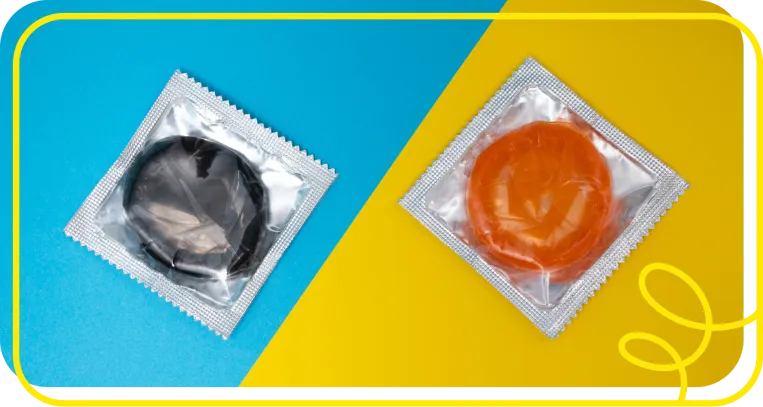
External Condoms
How Does This Method work?
A condom is a thin sheath often made of latex (there are latex free options) that is placed over the erect penis before sex. This method is free of hormones. Condoms must be used and removed properly every time you have sex.
How Does This Option Get Started or Stopped?
Patient controlled: Patient decides when to start/stop. Condoms are available over the counter and via prescription. Please share with your provider about any other health conditions or medications (even over the counter) you may be taking to make sure there are no interactions or concerns.

How Well Does It Prevent Pregnancy?
Efficacy for pregnancy prevention (out of 100 users with TYPICAL use over one year)

How Long Does it Last?
Condom is used at the time of sex

How Much Does It Cost?
This method can range from $2-6 for pack of 3.
If you have questions about this method, find a free or low cost birth control pill provider here on ICAN! and get answers.
Frequently Asked Questions
Common Side Effects:
If you experience any of these symptoms, see a provider as this could signal an allergy, STI or other health condition.
- Penile rash/itching
- Skin irritation
- UTIs
- Vaginal pain/itching
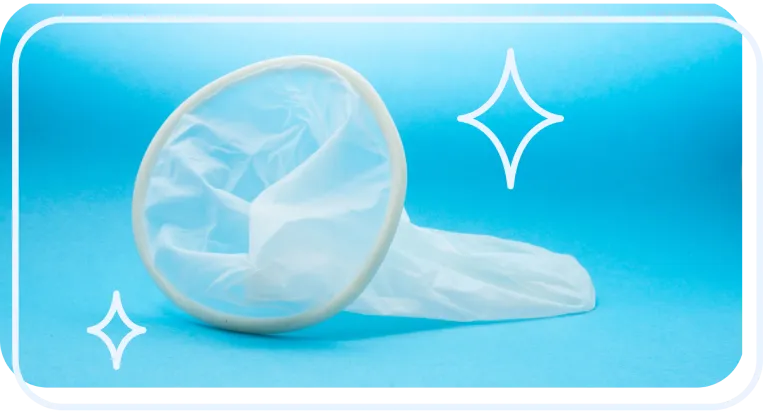
Internal Condoms
How Does This Method work?
An external condom is a thin, soft barrier pouch with a ring at the end. It is placed inside the vagina or anus before sex. This method is made of nitrile and hormone free.
How Does This Option Get Started or Stopped?
Patient controlled: Patient decides when to start/stop. Usually requires a prescription though could be purchased online directly here. Please share with your provider about any other health conditions or medications (even over the counter) you may be taking to make sure there are no interactions or concerns.

How Well Does It Prevent Pregnancy?
Efficacy for pregnancy prevention (out of 100 users with TYPICAL use over one year)

How Long Does it Last?
Internal condom is used at the time of sex
How Much Does It Cost?
With Illinois programs and participating providers, there shouldn’t be any out-of-pocket costs to you; but costs for this method can range from $0-$3 per condom.
To get started, find a free or low cost birth vaginal gel provider here on ICAN.
Frequently Asked Questions
Common Side Effects:
If you experience any of these symptoms, see a provider as this could signal an allergy, STI or other health condition.
- Penile rash/itching
- Skin irritation
- UTIs
- Vaginal pain/itching

Emergency Contraception (EC)
How Does This Method Work?
Emergency contraception (EC) works by stopping the release of an egg (ovulation) or preventing the egg and sperm from joining. Both the hormonal and copper IUD and oral pills can serve as effective forms of EC. Both should be used as soon as possible within 5 days (120 hours) of unprotected sex to decrease the chance of pregnancy.
IUDs: IUDs are a good EC option if you are interested in using a long term reversible method of birth control in addition to needing EC. Both the hormonal IUD or IUD with copper are safe to use up to 5 days after unprotected sex.
Oral Pills: The more commonly known type of EC pill known as Plan B or Next Choice is available without a prescription and without age restrictions. Another type of EC pill, called Ella, requires a prescription and is more effective for anyone over 165 pounds. Ask your provider for an EC prescription during your next visit and get it filled so you can have it on hand at home if you ever need it.
How Does This Option Get Started or Stopped?
Patient Controlled: Patient decides when to start/stop. EC is available over the counter and via prescription. If you have Medicaid, you can also get it at no cost without a prescription, but you have to ask the pharmacist to “use the standing order for EC.” Please share with your provider about any other health conditions or medications (even over the counter) you may be taking to make sure there are no interactions or concerns. This section refers to the oral pills, please navigate to the Copper IUD section or the Hormonal IUD section for more information.

How Well Does It Prevent Pregnancy?
How Long Does it Last?
The pills can be taken each time you think you may be at risk of pregnancy (i.e., condom breaks, forgot your pills, mistimed your cycle). The IUD can be used long term, for the duration of the device (6-12 years depending on the type you select), but can be removed sooner.
How Much Does It Cost?
With Illinois programs and participating providers, there shouldn’t be any out-of-pocket costs to you; but costs for emergency contraception pills can range from $0-$50+.
To get started, find a free or low cost emergency contraception provider here on ICAN!.
Frequently Asked Questions
The questions and side effects are for the oral pills, please navigate to the Copper IUD section or the Hormonal IUD section for their side effects and FAQs.
Common Side Effects:
Most side effects subside in a few days, if side effects persist for more than 48 hours or become severe contact your provider.
- Breast Tenderness
- Dizziness
- Headaches
- Irregular Bleeding
- Nausea
- Vomiting
Birth Control Options Resources
Download our printable birth control charts or our mini-magazine, to learn about and compare birth control options.

